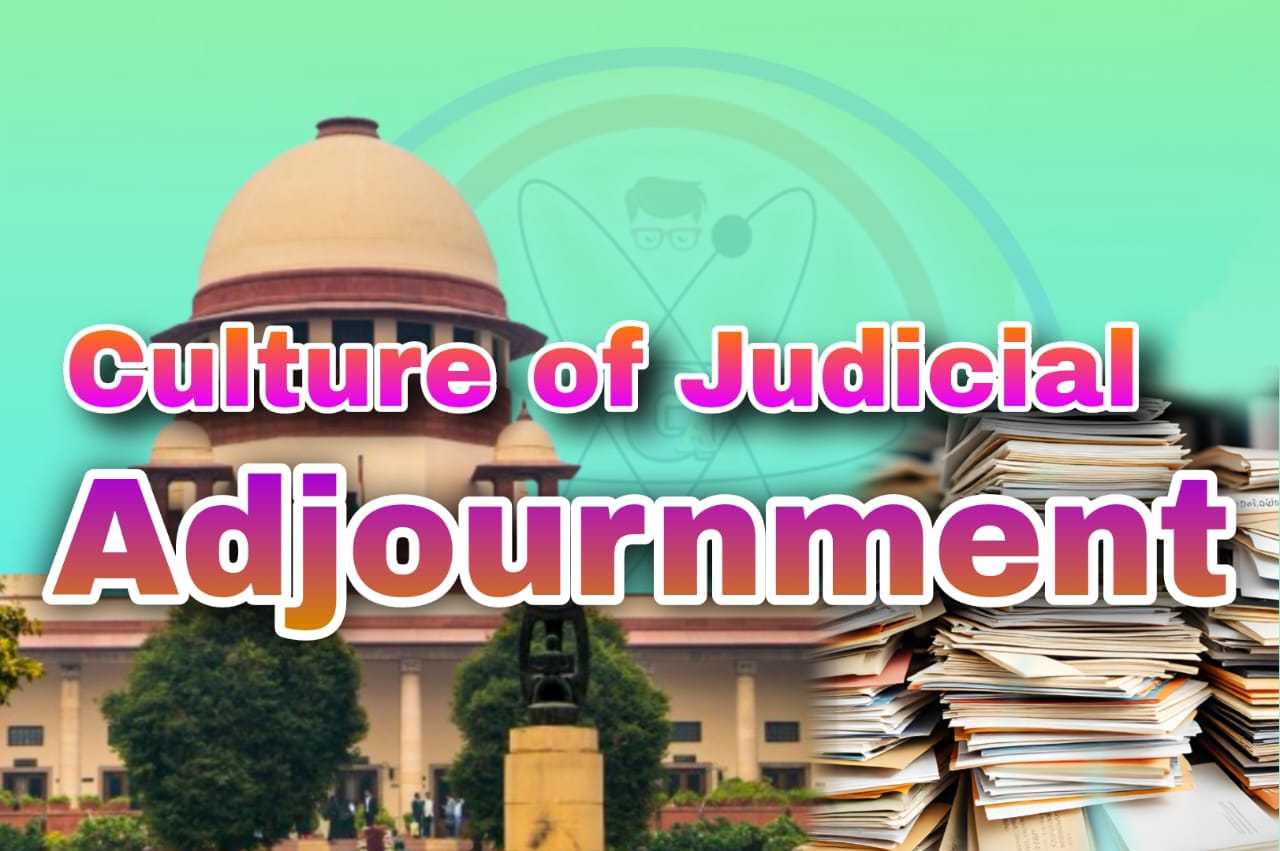
Context
The issue of case pendency and frequent adjournments has emerged as a major hurdle in delivering timely justice within the Indian judicial system. Recently, President Droupadi Murmu emphasized the need to reform this “culture of judicial adjournments” at the National Conference of District Judiciary, organized by the Supreme Court. She highlighted the adverse effects on the rural and poorer populations, who often avoid seeking legal recourse due to fears of prolonged delays in case resolution. The President’s concerns point to an urgent need for solutions to ease judicial burdens and expedite justice.
Causes of Case Pendency and Adjournments
Several factors contribute to the backlog of cases and delays in the judicial process in India. Here are some of the most prominent:
- Shortage of Judges:— One of the most fundamental issues is the low judge-to-population ratio. India currently has 21 judges per million people, far below the recommended level of 50 per million, as suggested by the Law Commission in its 120th report. This deficiency means that existing judges handle a vast number of cases, making it impossible to meet the demand effectively. Compounding this, there is often a delay in filling judicial vacancies, creating further strain on the system.
- Multiplicity of Responsibilities:— Judges often manage additional court responsibilities or work across multiple cases, even in specialized courts. This situation results in judges being overburdened with administrative and judicial tasks, reducing the quality of their judgments and sometimes leading to errors that contribute to further appeals and delays.
- Lack of Prior Judicial Impact Assessment:— Many laws are enacted without assessing their impact on the judiciary. When a new law is introduced, it often results in additional cases that strain judicial resources, yet there is no corresponding expansion of the judicial workforce or infrastructure to handle these additional cases.
- Delays in Witness Attendance:— In criminal cases, the process of bringing witnesses to court can be lengthy and inconsistent, contributing to multiple adjournments. Witnesses often have personal or professional obligations that prevent them from appearing on time, and insufficient witness protection or incentive programs add to these delays.
- Procedural Complexities in High Courts and the Supreme Court:— High Courts are overburdened, with the present strength of judges far below the sanctioned strength. For example, as of October 2024, only 770 of the 1,114 sanctioned judge positions are filled. Additionally, Supreme Court judges handle a wide range of cases due to the direct appeal provision under multiple statutes, creating excessive pendency at the apex level.
- Administrative and Legislative Challenges:— The abolition of specialized tribunals in 2021, with cases transferred to High Courts, has increased caseloads, as these courts now handle not only their traditional work but also cases previously managed by specialized tribunals.
Judicial Strain and Mental Stress on Judges
The volume of cases managed by judges is immense, especially at the lower judiciary level. For instance, a magistrate is often responsible for handling multiple types of cases daily, from criminal trials to remands, bails, etc. On any given day, a judge may preside over around 100 cases, which can lead to mental exhaustion and reduce the focus necessary for careful judgment. Over time, this may increase the likelihood of errors, further appeals, and additional delays.
Possible Solutions to Reduce Pendency and Adjournments
To address this long-standing issue, a multi-faceted approach is required:
- Judicial Impact Assessment:— A recommendation made by the Justice M. Jagannadha Rao Committee advocates for assessing the impact of new legislation on the judicial system before enacting laws. This assessment would include estimating the potential increase in case numbers, required judicial resources, and necessary infrastructure. Judicial impact assessments would allow a more balanced rollout of laws, ensuring that courts have the capacity to manage the resulting caseload.
- Expanding the Judge Pool:— Increasing the number of judges in both the lower and higher judiciary is crucial. The judicial appointments process should be streamlined, with High Courts and State governments beginning the process of filling district judiciary vacancies six months in advance to avoid prolonged vacancies.
- Avoiding Additional Charges for Judges:— Judges should not be given additional charge of multiple courts, especially when dealing with specialized cases. Allowing judges to focus on a single caseload will likely improve their efficiency and the quality of judgments.
- Alternative Dispute Resolution (ADR) Mechanisms:— Mediation and other forms of ADR can reduce the burden on courts by resolving disputes outside the courtroom. However, while mediation relies on mutual consent, a more robust system of mandatory pre-trial mediation for certain case types could help clear cases faster.
- Digital Case Management:— E-courts and digital case management systems can streamline processes by reducing paperwork and facilitating remote hearings, especially in procedural matters where physical presence is unnecessary. Digital case tracking, real-time updates, and online filing systems can improve case transparency and efficiency, reducing adjournment rates.
- Simplifying Procedures for Witness Testimony:— Making it easier for witnesses to participate, through measures like virtual testimonies or providing better logistical support, can improve the reliability and speed of court proceedings, minimizing the need for adjournments due to absent witnesses.
- Reforming Appeal Procedures in Higher Courts:— To reduce the burden on the Supreme Court, a filtering mechanism can be implemented for appeals to limit the cases admitted to those of national importance or cases involving significant constitutional questions. The High Courts and subordinate courts could handle less critical appeals, streamlining the caseload at the apex level.
- Promoting Timely Settlements in Civil and Family Cases:— The backlog in civil and family courts can be addressed through reforms that incentivize quicker settlements. Increasing court fees progressively for multiple adjournments or encouraging pre-litigation counseling in family matters can reduce unnecessary delays.
Conclusion
Case pendency and adjournments remain a challenge to the efficient delivery of justice in India, affecting the poor and marginalized disproportionately. While the judicial system grapples with an overload of cases, structural and procedural changes are essential to alleviate the burden. Increasing the judge-population ratio, using judicial impact assessments, improving ADR mechanisms, and enhancing digital infrastructure are steps that can help in ensuring that justice is delivered promptly. Implementing these reforms would reflect a judicial system not only committed to reducing backlogs but also upholding the core values of fairness, efficiency, and timely justice.
#Judicial Adjournments
#Judicial Adjournments
